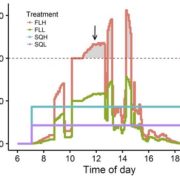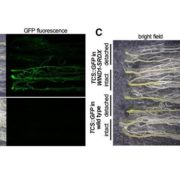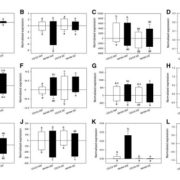
What We're Reading: April 21
Research, Research Blog0 Comments
/
Review: Rubisco activases: AAA+ chaperones adapted to enzyme repair
Rubisco, the fundamental enzyme required for photosynthetic carbon fixation, is susceptible to inactivation by the inhibitory binding of various metabolites. Rubisco activases (Rca’s) are enzymes that remodel Rubisco and facilitate…

What We’re Reading: April 14
Blog, Research, Research Blog
Note: Read Why We’re Writing “What We’re Reading”
Review: Ion transport at the vacuole during stomatal movement
Gas exchange and transpiration are regulated by the stomatal aperture, which is itself regulated by the changes in volume of the guard cells that overlie the stomatal pore.…

What We're Reading: April 7th
Blog, Research BlogNote: See Why We’re Writing “What We’re Reading”
Review: Ammonium as a signal for physiological and morphological responses ($)
Ammonium is one of the major forms in which nitrogen is assimilated. Besides being a nutrient, it also acts as signal that affects gene expression and root system…

Insights into Salicylic Acid and Mitochondria
Blog, Plant Physiology, Plant Physiology: On The Inside, Research, Research BlogWithin the mitochondrial electron transport chain, complex II (succinate dehydrogenase [SDH]) oxidizes succinate to fumarate by transferring electrons to ubiquinone (UQ), which is reduced to ubiquinol. The enzyme is formed by four subunits: a flavoprotein (SDH1), which contains the FAD cofactor, an iron…

The Root Greening Response in Arabidopsis
Blog, Plant Physiology, Plant Physiology: On The Inside, Research, Research BlogBased on various developmental, environmental, and hormonal cues, proplastids can be converted into different types of plastids within cells. In Arabidopsis, chloroplast development is repressed in roots via auxin signaling. When roots are detached from the shoot, and its supply of auxin, roots develop…

Monitoring the Dynamics of Freezing in Trees
Blog, Plant Physiology, Plant Physiology: On The Inside, Research, Research BlogIce formation within plants influences their physiology mechanically, hydraulically, and at a cellular level. Mechanical strain occurs as water expands during freezing and tension is induced in the remaining liquid-phase sap. Xylem cavitation is initiated upon freezing due to the low (i.e. negative)…

Drought-Responsive Novel MicroRNAs in Grapevine
Blog, Plant Physiology, Plant Physiology: On The Inside, Research, Research BlogEuropean grapevines (Vitis vinifera) are routinely grafted on interspecific hybrid rootstocks mainly to control infestation by phylloxera (Daktulosphaira vitifoliae). Research has shown, however, that these rootstocks can also affect scion growth vigor and resistance to abiotic stresses such as drought.…

Developmental Responses to Fluctuating Light Regimes
Blog, Plant Physiology, Plant Physiology: Updates, Research, Research BlogPlants in nature experience a range of light intensities and spectral properties due to changes in sun angle and cloud cover in addition to shading from overlapping leaves and neighboring plants. Therefore, leaves are subjected to spatial and temporal gradients in incident light, which has major consequences…

Fighting World Hunger: Robotics Aid in the Study of Corn and Drought Tolerance
Blog, Research Blog
Fighting World Hunger: Robotics Aid in the Study of Corn and Drought Tolerance from MU News Bureau on Vimeo.
Developing drought tolerant corn that makes efficient use of available water is vital to sustain the estimated 9 billion global population by 2050. In March 2014, the National Science Foundation…

